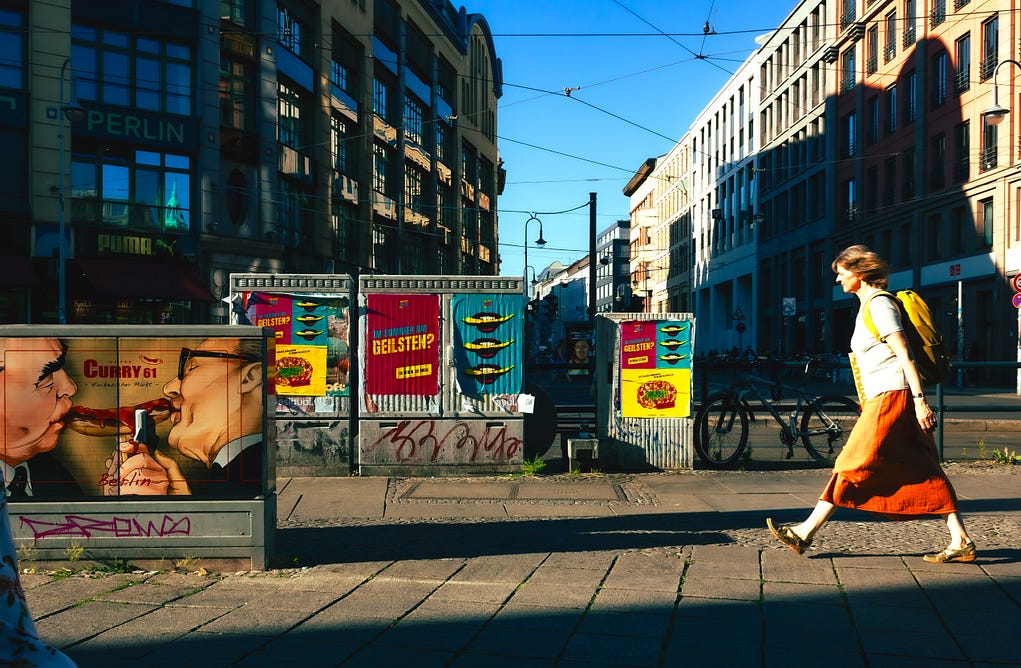The Best Strategy To Use For Street Photographers
The Best Strategy To Use For Street Photographers
Blog Article
7 Simple Techniques For Street Photographers
Table of ContentsThe Greatest Guide To Street PhotographersThe 45-Second Trick For Street PhotographersNot known Details About Street Photographers Examine This Report about Street PhotographersMore About Street Photographers
, a genre of photography that documents everyday life in a public area. The very publicness of the setup allows the professional photographer to take candid images of complete strangers, often without their expertise. Road professional photographers do not always have a social function in mind, yet they choose to separate and capture minutes which might or else go undetected.Though he was influenced by much of those who affected the road photographers of the 1950s and '60s, he was not mainly interested in catching the spirit of the road. The impulse to visually document individuals in public started with 19th-century painters such as Edgar Degas, douard Manet, and Henri de Toulouse-Lautrec, that functioned side by side with digital photographers attempting to catch the significance of city life.
Due to the relatively primitive innovation offered to him and the long direct exposure time required, he struggled to capture the hustle and bustle of the Paris streets. He trying out a series of photographic techniques, attempting to find one that would allow him to capture movement without a blur, and he found some success with the calotype, patented in 1841 by William Henry Fox Talbot. While the photographers' topic was basically the same, the results were significantly different, showing the influence of the digital photographer's intent on the personality of the images he produced.
The Single Strategy To Use For Street Photographers
Provided the fine high quality of his photos and the breadth of product, architects and musicians typically acquired Atget's prints to utilize as referral for their own work, though business passions were hardly his primary inspiration. Rather, he was driven to picture every last remnant of the Paris he loved.

Unlike his peers, Brassa used a larger-format Voigtlnder camera with a longer direct exposure time, requiring him to be extra computed and thoughtful in his method than he might have been if making use of a Leica. (It is believed that he might not have had the ability to manage a Leica during that time, however he did, nonetheless, make use of one in the late 1950s to take colour photos.) Brassa's pictures of the Paris underworld lit up by fabricated light were a revelation, and the compilation of the series that he released, (1933 ), was a significant success.

What Does Street Photographers Mean?
It is due to this basic understanding of the art of image taking that he is frequently credited with uncovering the tool throughout once again roughly a century since its creation. He took photographs for greater than a half century and affected generations of photographers to trust their eye and intuition in the minute.
These are the inquiries I shall attempt to respond to: And afterwards I'll leave you with my own definition of street digital photography. Yes, we do. Let's kick off with defining what a definition is: According to it is: "The act of specifying, or of making something certain, distinct, or clear".
No, absolutely not. The term is both limiting and misdirecting. Seems like a road photography should be photos of a streets right?! And all street digital photographers, except for a tiny number of outright novices, will completely appreciate that a street is not the key part to street digital photography, and in fact if it's a picture of a street with maybe a few uninteresting individuals see here now doing nothing over at this website of passion, that's not street digital photography that's a picture of a road.
Examine This Report about Street Photographers
He makes a legitimate factor do not you think? However, while I concur with him I'm uncertain "candid public digital photography" will certainly capture on (although I do kind of like the term "candid digital photography") due to the fact that "street digital photography" has been around for a long time, with several masters' names affixed to it, so I think the term is here to remain.
Inside?! I hear you scream as you shake your fist to the sky. Why not? You can contend the beach, at a festival, in a street, in a park, in a piazza, in a coffee shop, at a museum or art gallery, in a city station, at an occasion, on a bridge, under a bridge ...
Yes, I'm scared we have no choice! Without regulations we can not have a definition, and without a meaning we don't have a genre, and without a style we do not have anything to specify what we do, and so we are embeded a "policies meaning category" loop! And no-one wants to get embeded a loop. - Street Photographers

Report this page